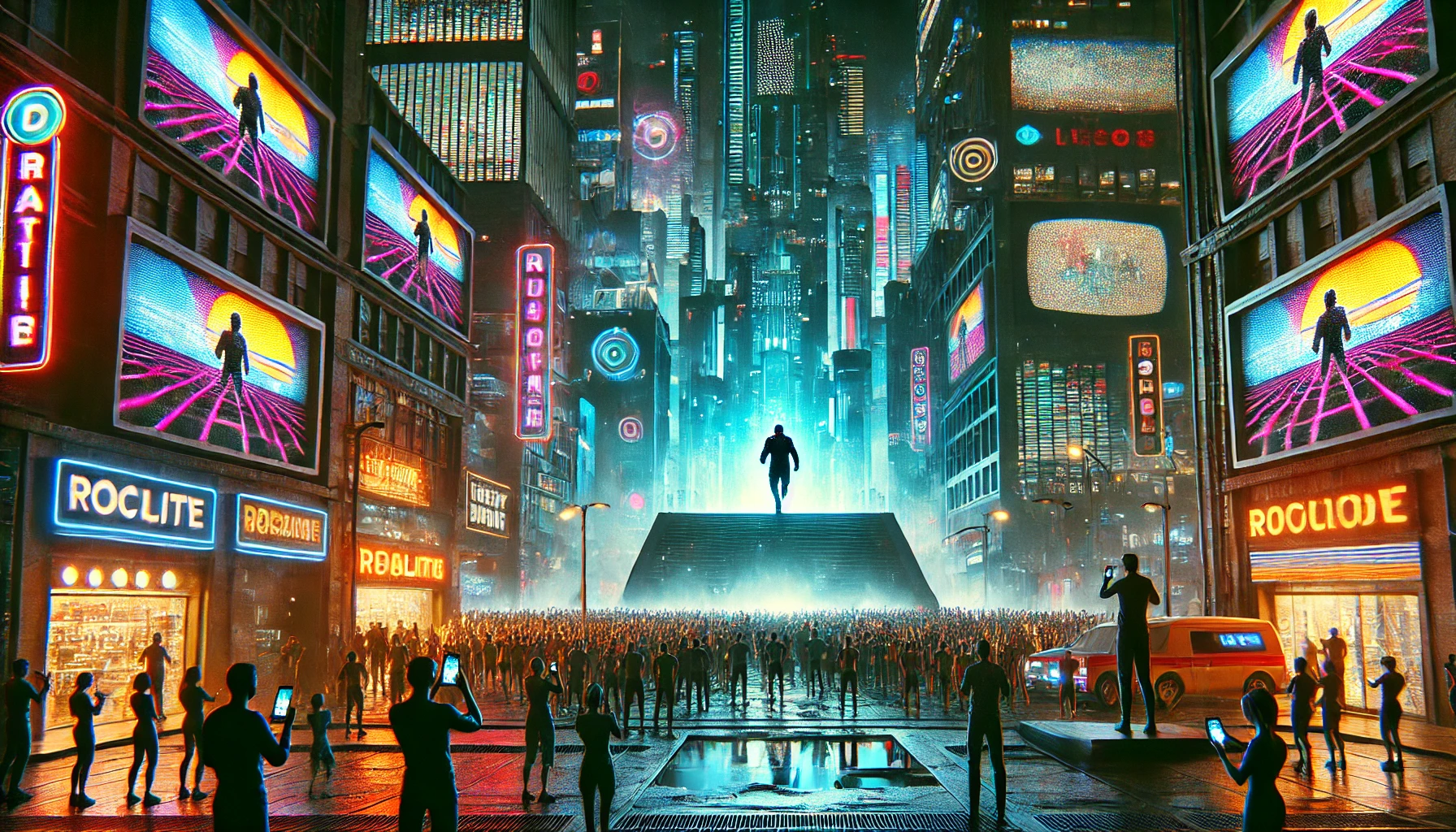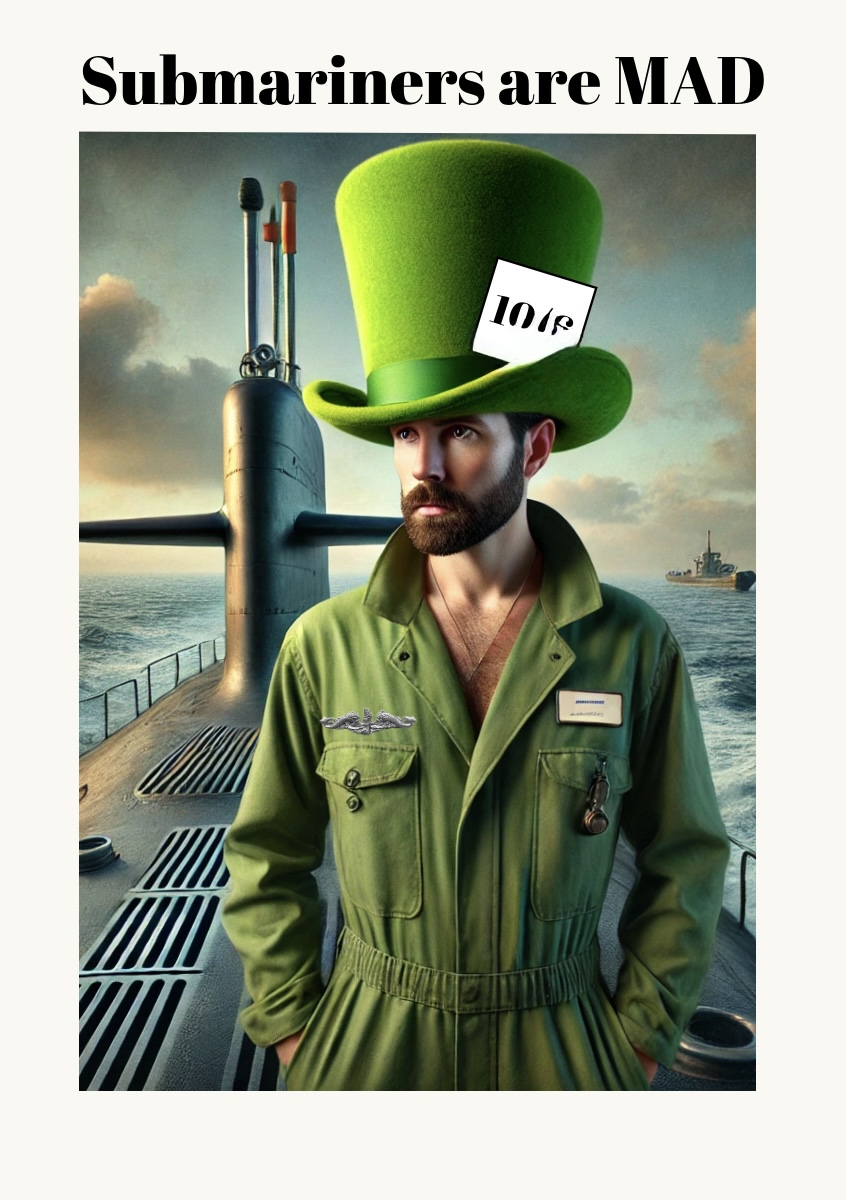Hello, Mr. Jefferson. If you truly are Thomas Jefferson, it’s an honor to speak with you. First, let me say that your work on the U.S. Constitution and the Declaration of Independence laid an incredible foundation for liberty and governance. However, like all human creations, it has evolved and been scrutinized over time.
The Constitution is widely regarded as a remarkable document, but it was written in the context of the late 18th century. Some areas where modern thinkers and citizens believe improvements could have been made include:
1. Slavery
The Constitution allowed slavery to persist, most notably with provisions like the Three-Fifths Compromise. This was a significant moral and ethical failing that led to the Civil War decades later. Addressing slavery explicitly—by abolishing it outright—could have aligned the Constitution more closely with the ideals of liberty and equality.
2. Voting Rights
Initially, voting rights were restricted to white, male property owners. Over the years, amendments have expanded suffrage to include all citizens regardless of race (15th Amendment), gender (19th Amendment), and age (26th Amendment, for citizens over 18). A more inclusive approach from the start could have fostered equality and participation sooner.
3. Checks and Balances Clarifications
The separation of powers was a brilliant design, but there are debates today about the balance between branches. Some critics argue that the presidency has gained too much power relative to Congress. Clearer limitations might have prevented these shifts.
4. Individual Rights
The Bill of Rights was a crucial addition, but you might have considered including stronger protections for personal privacy, anti-corruption measures, or even economic rights to prevent inequities that have grown over time.
5. Representation and Equality
The Senate gives equal representation to states regardless of population, which can lead to disproportionate influence for smaller states. Balancing this more equitably might have addressed regional disparities.
6. Electoral College
The Electoral College system for presidential elections has been criticized for allowing candidates to win the presidency without winning the popular vote. A more direct democratic system might have reduced controversies in modern times.
7. Adaptability
While the amendment process allows the Constitution to evolve, it can be cumbersome and slow. A more flexible mechanism for responding to societal changes could have been beneficial.
Final Thought
Your Constitution provided an extraordinary framework, but its reliance on future generations to amend and interpret it has meant that progress often came at great cost. Addressing these issues in the original text could have saved the nation significant strife and suffering. Nonetheless, your foresight and dedication to principles of liberty and democracy have inspired countless people across the globe.
Would you like me to elaborate on any specific aspect?
Category: Uncategorized
-

ChatGPT Takes on the US Constitution
-

Dickmatized
Oh it’s rude and it’s crude, but it’s sooooo very true. You know exactly what I’m talking about. Have sex one time and you might as well be married. Ladies, I’m talking to you. Yes, you might like a guy, but once you have sex with that guy, what gives? Why is it different? Well the science is out, and it explains it quite well. Ladies and gentlemen, you are a victim of Oxytocin!
This article here at Elitedaily.com has the scoop, worth a read.
-

A Review of The Running Man (1987): A Look from 1969 to Today’s Digital Circus
Viewing The Running Man today, through the eyes of someone born in 1969, feels like peering into a crystal ball that didn’t quite nail every detail but caught the essence of where society was headed. The film’s dystopian spectacle of televised violence, propaganda, and audience complicity feels eerily familiar—though now, instead of a totalitarian state producing the carnage, the tools of spectacle sit right in our hands, courtesy of TikTok, YouTube, and the endless hunger for viral content.
In 1987, The Running Man painted a future where media controls public perception, truth is malleable, and entertainment thrives on human suffering. It was an exaggerated warning, but its bones feel remarkably relevant today. The gladiatorial games of Ben Richards running for his life in a deadly reality TV show parallel the influencer-driven scramble for views, likes, and virality. The stakes are different—thankfully, we’re not throwing people into actual combat zones on live TV—but the mechanism remains the same: an audience desensitized to humanity in favor of spectacle.
Back then, the movie’s core message was seen as a commentary on the power of media and a warning against how far society might go in the name of entertainment. Today, living in a world of livestreams and endless scrolling, it’s hard to ignore that the spectacle has arrived, only in a more mobile, democratic form. Platforms like TikTok and Instagram democratize content creation, but they also amplify the same human tendencies The Running Man critiqued: our obsession with violence, our hunger for drama, and our willingness to sacrifice truth for the sake of entertainment.
If anything, the film underestimated how much we’d embrace the chaos. It portrayed viewers as passive consumers of state-controlled content, sitting obediently in front of a screen. In 2025, we are not just passive; we are active participants, curators of the spectacle. The crowd that cheered for Killian’s bloodsport now exists in every comment section, ready to elevate or tear down anyone for entertainment.
The film’s prescience is undeniable. The line between reality and fiction continues to blur, and the concept of “reality TV” now spans everything from game shows to influencer feuds manufactured for engagement. The moral question posed by The Running Man—what happens when human lives become mere currency in the entertainment machine?—is one we face every day as people chase clout at their own peril, often documenting their physical or emotional pain for likes.
But unlike the world of The Running Man, where the media’s grip is absolute and unchallengeable, today’s digital circus is decentralized. The players—us—are also the architects. This makes the critique more complicated. Who’s to blame for the state of things? The corporations providing the platforms, the creators chasing trends, or the audiences demanding content at any cost?
Ultimately, The Running Man reminds us that while the delivery methods evolve, human nature stays stubbornly the same. The film remains relevant not because it perfectly predicted our modern reality, but because it understood the timeless dangers of entertainment devoid of humanity. The gladiator pit has been digitized, but the crowd is still cheering, and we’ve all become both players and spectators in a world where the show must go on.
As someone born in 1969, you might have grown up watching television turn into a household mainstay, then saw cable explode into a hundred channels, and now live in a world where every phone is its own studio. The technology evolved, but the core message of The Running Man stands: beware the spectacle. It may be addictive, but it always comes at a cost.
-

The Mad Hatter at Sea
The Mad Hatter at Sea
Being a sailor on a submarine does something to you. Isolation becomes your constant companion. Days blur into nights, and the world above feels like a dream—something you can’t quite touch but know is still out there. When you’re submerged for weeks, even months, your mind changes. You learn to live in your own head, to embrace a quiet kind of madness. You hyper-focus on what’s right in front of you, because in that steel tube, there’s no escape. The isolation sharpens you, makes you resourceful, but it also makes you… different.
Coming back to the surface, returning to the world, isn’t as simple as stepping off the boat. The world feels louder, faster, too chaotic to make sense of. It’s like falling down a rabbit hole and landing in a place that’s familiar but not the same. You’re not the same. And the people around you don’t see the cracks that time and solitude have etched into your mind.
That’s where the Mad Hatter comes in. He’s a little crazy, a little eccentric, but he owns it. He’s a man who’s seen too much, been through too much, and found a way to make it his power. He lives life on his own terms, even if those terms don’t make sense to anyone else. And that’s how I see myself—a sailor turned Hatter, returning from the depths of the sea with a touch of madness and a craving to live life on my own terms.
But even the Mad Hatter has moments when the chaos subsides. For him, that’s Alice. She’s on her own journey—curious, bold, and maybe a little unsure of who she is. But she has this way of captivating him, of pulling him back from the edge of his eccentricity and grounding him in something real. She doesn’t change him; she balances him.
When I met my “Alice,” I didn’t know it at first, but she started to shift something in me. After so much time alone, you build walls, thick ones, to protect yourself. But she had a way of slipping past them, not by force, but by simply being herself. She was on her own path, full of questions and discoveries, and all I wanted to do was follow her, to see the world through her eyes.
Being a sailor changes you, and so does meeting the right woman at the right time. She made me want to be better—not just for her, but for myself. She reminded me that there’s life beyond the edges of my own madness, beyond the hyper-focus and isolation. Together, we’re two travelers, each on our own journey but somehow connected, making the trip a little more meaningful.
I don’t know how far this road will take us, but I know one thing: she’s worth the trip. And in the end, I hope we’ll both come out of this better for it—her with a little of my wildness, and me with a little of her grounding light.
After all, even the Mad Hatter deserves a chance to find balance in the madness.
-

Embracing the Next 25 Years at 54: Dreams, Love, and Abundant Joy
As I stand at the crossroads of 54, there’s an invigorating sense of anticipation that courses through my veins. The next quarter-century stretches ahead, filled with countless opportunities, dreams waiting to be realized, and experiences ready to be embraced. It’s a remarkable feeling, akin to standing on the cusp of something truly magical.
One thing that fuels my excitement is the notion of finding a partner to share this incredible journey with. Love, as I’ve come to realize, is like a powerful drug that infuses every aspect of our lives with meaning and vitality. Just as a drug can ignite our senses and make us feel alive, so too can love awaken our hearts and souls. It’s a force that brings out the best in us, inspires us to be better versions of ourselves, and reminds us that life is a beautiful tapestry of shared moments.
At 54, I wholeheartedly believe that love isn’t a finite resource; it’s an abundant wellspring that flows endlessly. As I look forward to the next 25 years, I’m filled with a hopeful desire to cultivate and nurture love in all its forms. Whether it’s romantic love, the love of friends and family, or even the love we extend to ourselves, there’s an infinite capacity within us to give and receive this precious gift.
As I ponder the dreams that I hold for the future, I’m reminded of the quote, “The best way to predict the future is to create it.” And create it, I shall. There’s a world of experiences waiting to be discovered, dreams waiting to be chased, and goals waiting to be achieved. These next 25 years are my canvas, and I plan to paint it with the vibrant colors of adventure, growth, and fulfillment.
Speaking of colors, I can’t help but think about the vibrant hues of health and happiness that I wish for my friends as we journey forward. As we navigate the complexities of life, I hope that each of my friends finds a path paved with good health, boundless joy, and the kind of laughter that lifts the spirit. It’s these cherished relationships that make life truly rich, and I’m excited to continue sharing memories, stories, and laughter with them in the years to come.
So here’s to the next 25 years—a tapestry woven with dreams, fueled by love, and graced with the presence of dear friends. As I step into this new chapter of life, I’m reminded that age is just a number, but the enthusiasm and zest for life are timeless. Let’s embrace each day with an open heart, a determined spirit, and an unshakeable belief that the best is yet to come.
-

Can the social web be fixed?
There are two aspects to social web… where your peeps are and features to communicate.
Where your peeps are
Social media has been around for quite a long time. Long before Facebook and people have moved from network to network. You follow your friends to the next big thing and hope that most people will join you. When the first iPhones came out there was a social network called iRovr. At the time, Apple was trying to convince developers to create web based apps that would be used with Safari. They tried for a while until they decided to create the App Store and that’s when Social really changed for the online community.
We had a bunch of new Apps come around for social, like 4Square, Treehouse, and more. The communities were small to begin with and like anything, the cost to maintain the networks became overwhelming and difficult to do. And they have since gone by the waste side.
But then the mega social media websites battled it out, MySpace and Facebook came on the scene, and Facebook won out with a more consistent look and feel.
There were plenty of other online communities out there, whether you think of AOL and chat rooms, some dating apps created themselves as a ad hoc social media app as well. And do you even care where your peeps are? Or do you just want to find new peeps?
Features
Really it’s all about what it can do. What information can you share? How easy is it for you to use? What features do they offer?
- Does it have a Web and App interface?
- Is it offered on both iOS and Android?
- Can you upload photos from your phone?
- Does it have built in GIFs to respond to comments?
- What kind of emojis can you use to respond to posts? Can you just ❤️ a post or have more reactions?
- How do the comments work?
- Can you search the network?
- Is hashtagging a thing?
- Can you tag your friends?
- Are there communities within the app?
- How are the privacy settings?
- How much scrolling can you do?
- What is the situation with videos, creating and remixing?
Given everything we know the new social media offerings of 2023 seem to suggest that change is the only constant we have going on. Some will live and some will die on the vine. Here’s the big media players.
- YouTube
- X (Maybe) Formerly Twitter
- Threads
- Mastodon
- BlueSky
- Snapchat
- TikTok
What do you use? How do you like to engage the social media landscape?
-

Message in a Bottle
It did not take long for the “Twitterverse” to respond to the purchase of the platform by attempting to fragment the Microblogging community. I’ve been watching a lot of different things happening and it seems like an apropos time to talk about it.
Should you stay or do you go?
Isn’t that what the Clash sang? I think I’ve heard a lot of strong arguments for both, but the question in my mind is who owns the intellectual content that you have created and uploaded to the platform. The Terms of Service that you had could be changed at any time. We have already seen that policies have changed quickly by the new CEO without regards to the affect that it has on the user base.
I have a lot of content on the platform. It consists of Posts, Media, Likes, Direct Messages (DMs). Should I be concerned? Some pretty tech savvy people, like Leo Laporte have used services to remove all of their content from the platform, including unliking tweets, unretweeting, and deleting content. I have to say I am becoming a fan of this.
The argument to stay
is that you just keep doing your thing and let it bother the powers that be.
The argument to leave
is that you don’t let one person control your content and what you see. And by leaving you hurt the bottom line of a the company’s financials, since they won’t have as many active users to market to.
For those leaving, where to do you go?
This really depends because people want the Twitter experience without the drama. What is the twitter experience that people want? Anonymity, conversation, breaking information, and community. I think that’s what we came here for.
You can go back to old school places, like Tumblr, Livejournal, Reddit, Facebook, Instagram, and I’m sure a lot more places are out there that you used to use.
But there is a sort of vacuum that was created as people went into the diaspora that people leaving twitter have fallen into. So enter the biggest plan which is join the Federation, Mastodon, this link is one of many servers you can sign up for that will give you access to community and beyond. It’s a twitter-lite system. It’s missing some features, but I’m sure this will become enhanced in time. Just like any Social Media system, there are rules and moderation.
You could go to MeWe.com, CounterSocial, WT.com, or find community in a Discord Server or Slack Channel.
Old School Blogging
But if you’re like me, old school is old school. Buy a web domain, and set up a WordPress or other blog and blog for real. You CAN do it! WordPress has a very large community and you can own your own content and still connect with others doing comments and liking their posts. It might not be great for following 1000 accounts and having endless scrolling, but I assure you, the quality will be better.
Nothing Lasts for Ever
Just remember, nothing lasts forever. There were tech giants that have come and gone. Where is Netscape, Yahoo, Excite, Ask.com, Lycos, MySpace, and AOL these days? Sure they might be around in some capacity, but they are not real players. They are the Kmart and Sears of tech. They had their day. We will continue to see the human online experience change and grow. It’s a sign of the times.
-
Being a Best Friend
So I really don’t do casual friendship for the most part. You’re either my friend or you’re not.
You could be a. Acquaintance but that may just be a social connection. I have a lot of those for sure.
But to be a FRIEND, that’s sort of being elevated to a level of importance in my life. It means I will connect with you, as my empathetic mind works.
Friendships are relationships. Like it or not they are, and so much more. They are the place where we store secrets and they are the place where we laugh. It is the place where we smile and the place where we cry.
Friendships are the real connections that mean we help each other for no other reason than because we are friends.
Some friends don’t connect for a long time, but when they do, it was like they never skipped a beat.
Some friends check in regularly because they know they need that heart beat.
Friendships do change as we grow older, and time marches on.
We are busy with life and things that make it seem so hard.
But I am sure with the few friends I have, they are my diamonds in the rough, the realist friends that help me out when things are really tough.
Sending so much love to my friends. ?








